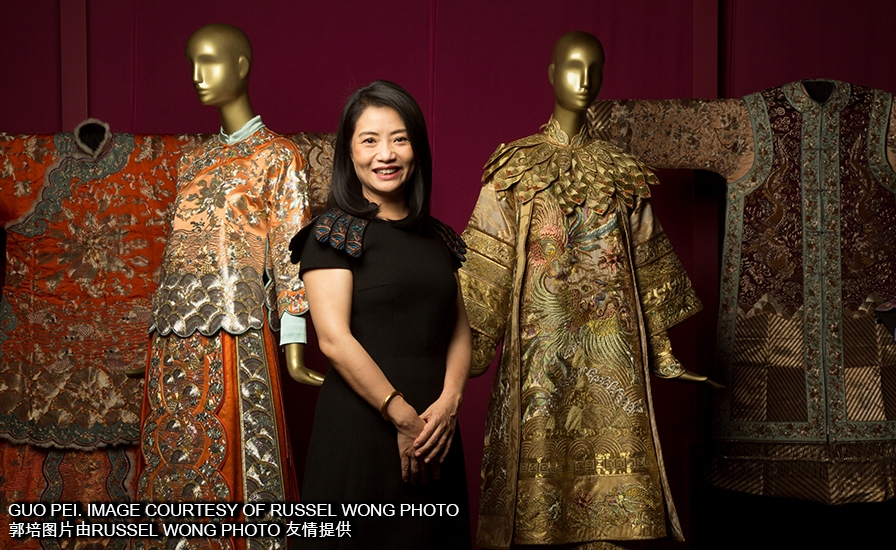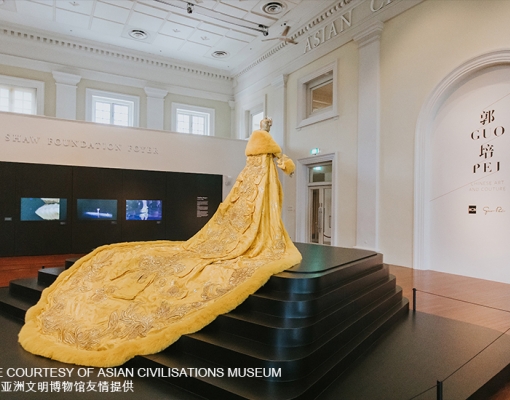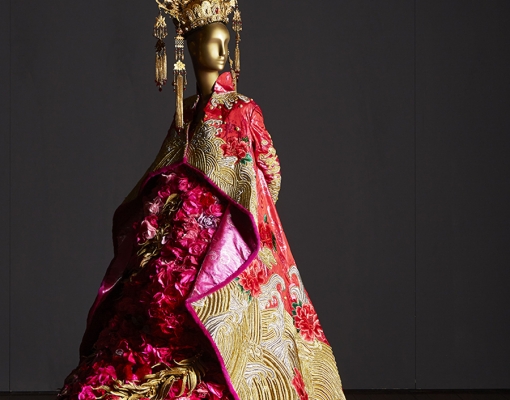
Intima Asia
Guo Pei: Chinese Art And Couture
04 November 2019
Singapore, 12 june 2019 – in a collaboration with world famous couturière Guo Pei, the Asian Civilisations Museum in Singapore presented, for the first time from 15 june to 15 September 2019, art through couture in a juxtaposition of masterpieces created centuries apart.

The exquisite showcase examined the relevance and impact of Chinese art, and how Chinese aesthetics and traditions are being reimagined for the world today.

Guo Pei: Chinese Art and Couture opened the museum’s Season of Chinese Art, which explored the best of the genre and presented it for a contemporary, international audience. With 20 Chinese art masterpieces from the Museum’s collection and 29 dresses by Guo Pei, this blockbuster exhibition spanned two galleries and is part of the Museum’s commitment to examining the Asia’s diverse cultural heritage, interconnections within Asia, and connections between Asia and the rest of the world. Mr Kennie Ting, Director of the Asian Civilisations Museum and Peranakan Museum, explained “Guo Pei: Chinese Art and Couture is significant to our visitors for two reasons. Firstly, it is our first special exhibition dedicated to fashion and thus is representative of our shift to the contemporary domain. Our aim is to make a point as to how heritage and tradition are still very much relevant to the contemporary; that heritage and tradition can be remarkably sexy and alluring. Every masterpiece in the exhibition is a unique blend of contemporary and traditional design, material and craft. Secondly, the exhibition has been designed to give visitors a simple and visually arresting overview of Chinese art history: imperial art, export art, and folk art. We wanted a show that would introduce visitors to aspects of Chinese art – materials like silk and porcelain, the craft of embroidery, motifs such as peonies and phoenixes – in a completely unexpected and, hopefully, very memorable fashion.”

Guo Pei’s works are displayed on Bonaveri
mannequins. The exhibition began with a dramatic
display of 黄皇后(Yellow Queen), the iconic cape worn
by Rihanna to the 2015 Met Gala. A symbol of Guo Pei’s
breakthrough to an international market, the dress also
represents a moment in time when the world
encountered and engaged – through countless
reactions, conversations, and memes –with a
masterwork inspired by the imperial China. The main
exhibition space featured three sections. In ‘Gold is the
Colour of my Soul’, Guo Pei’s signature yellow and gold
works reflected the historical significance of colour,
techniques, and materials strongly associated with
imperial China. In ‘Treasured Heirlooms: Chinese Bridal
Dress’, Guo Pei’s works were shown to continue and
modernise traditional Chinese bridal style, with strong
Peranakan connections; and they have found relevance
with celebrity brides today, including Angelababy, Liu
Shi Shi, and Tang Yan.
Every sightline in the exhibition space emphasised a
visual dialogue between the historical and the contemporary through deliberate juxtapositions of
Chinese art masterpieces and Guo Pei’s masterworks.
Each pairing showed off the best of Chinese traditional
craftsmanship as well as modern couture techniques in
the expression of creativity and storytelling. Just as
how in the past Chinese export art garnered demand
around the world, its reinvention and modern
interpretations continue to fascinate the world today
and provoke visitors to consider how the past continues
to inspire the future. One dialogue could be found in
the ‘Gold is the Colour of My Soul’ section of the
exhibition, through a pairing that explores prevalent
Buddhist symbols in Chinese art, which Guo Pei has
delicately incorporated into her 大金(Magnificent
Gold). The dress has been hailed by the China National
Silk Museum as “the birth of haute couture in China” for
its technical mastery and incorporates elaborate
embroideries, similar to the kind used to produce
thangkas (paintings or embroideries on scrolls)
depicting Buddhist deities and scenes. Guo Pei’s team
of artisans study the embroidery on historical thangkas
like this to refine their techniques.

In another dialogue, in the section ‘China and the
World’, we saw classic Chinese patterns of flowers,
crests, and clouds, not just on precious blue-and-white
porcelain, but also incorporated, using the same
method of brush painting blue pigment, onto Guo Pei’s
sculptural masterpiece 青花瓷(Blue-and-White
Porcelain).
The continuation of Chinese artistic traditions and
culture by the Chinese diaspora was evident in the
many cross-cultural masterpieces in this exhibition.
Guo Pei’s bridal collection, which has been embraced by
Chinese celebrities and other wealthy clients, was
inspired by historical bridal ensembles made in China
but imported to Southeast Asia to be worn by
Peranakan Chinese brides. One of her creations, shown
in the ‘Treasured Heirlooms’ section, was the genesis
for this collaboration between ACM and Guo Pei.
The couturière saw a bridal ensemble in the
Peranakan Museum’s travelling exhibition on Peranakan
Chinese art in Paris back in 2010. Her interpretation of
that Peranakan bridal ensemble, worn by Angelababy
for her wedding, was seen by exhibition curator Jackie
Yoong. She made the connection to the Peranakan
Museum’s historical bridal ensemble and then began to
conceptualise this exhibition.
“In this exhibition, fashion and history come full
circle. We see how the past inspires the present, we see
how traditions are revived and rejuvenated, and we see
how export objects and foreign ideas influence the
local. I encourage visitors to take a close look at the
incredible detail in Guo Pei’s fantastical works – to fully
experience the devotion and dedication behind the
thousands of hours of stitches required to make them”,
said Ms Jackie Yoong.
Related articles:
Copyright 2024. All rights reserved - Terms














